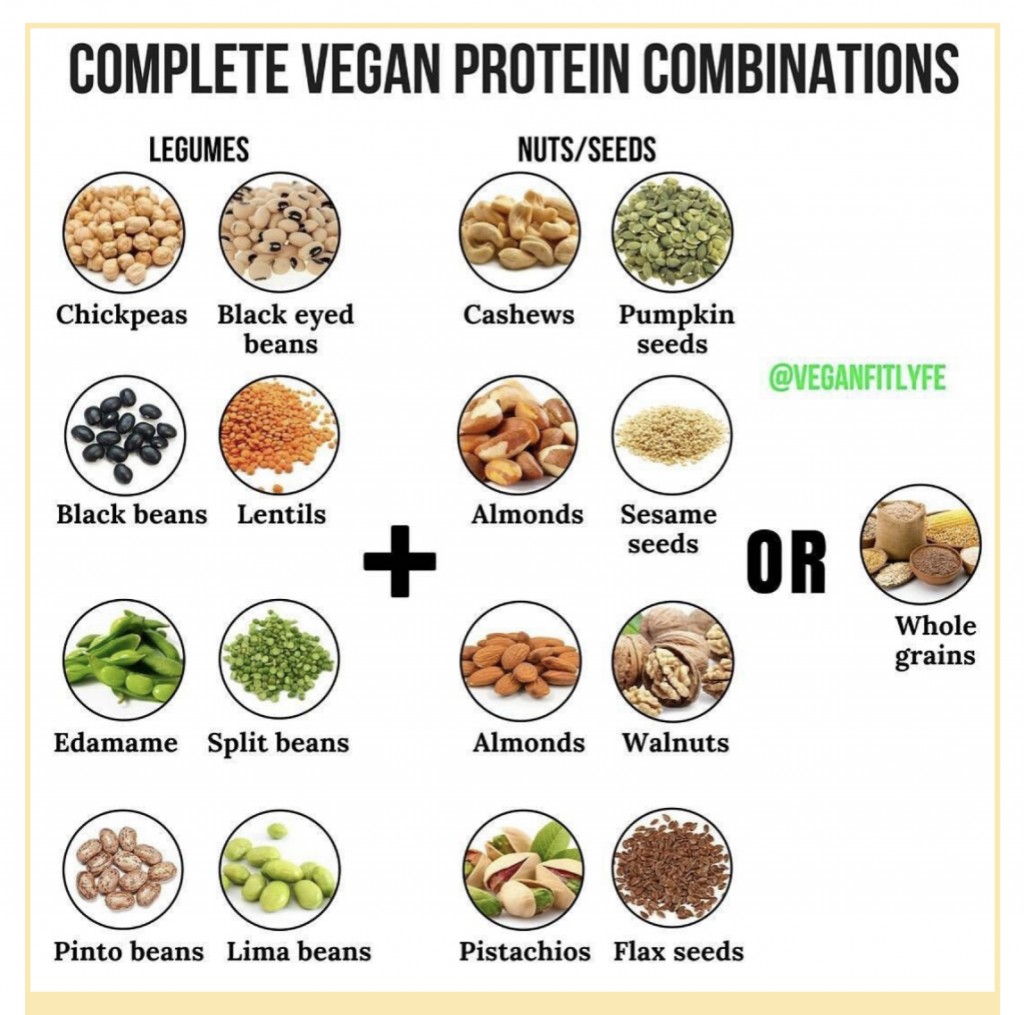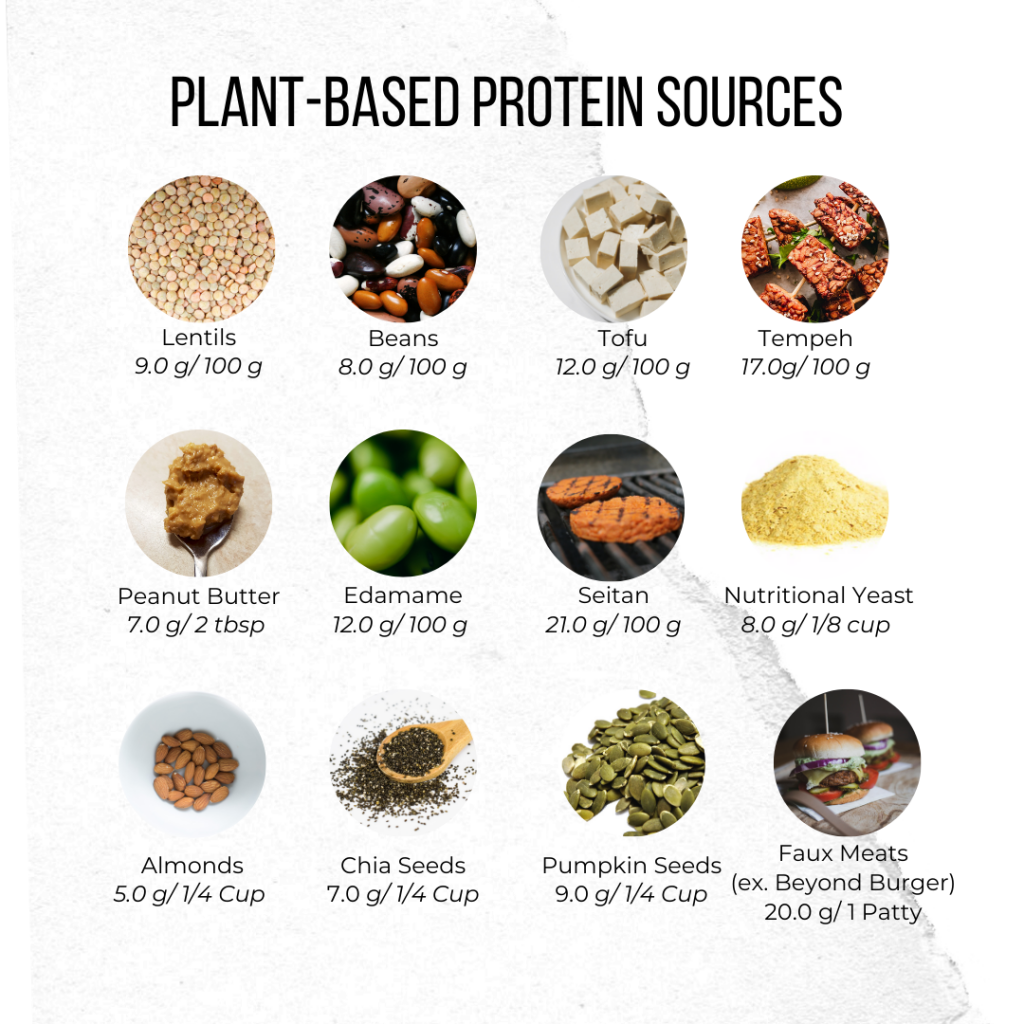Looking to explore the world of plant-based proteins? Plant-based diets have gained a lot of attention in recent years, but it doesn’t have to be an all or nothing approach! Let’s break it down and show you how to incorporate some plant proteins in your diet while debunking some common misconceptions.

Mixing plant proteins into whatever diet you follow can have positive effects on your body, the environment and your overall health. However, there can be confusion about what plant-based proteins are, how to incorporate them into your diet and the implications they have for your health.
There are SO many misconceptions about plant-based proteins. Many people assume you can not get enough protein from plants or that they are too expensive, or they ‘taste bad’ and even assume they are not a complete source of protein. Luckily, these misconceptions do not hold true when we explore these ideas further. In reality, incorporating just a small amount plant-based proteins can have positive health-promoting effects.
Plant based proteins can:
- improve your gut microbiota
- boost your fiber intake
- help with weight management
- lower the risk of diabetes
- reduce the risk of heart disease
Therefore, mixing up your diet with plant-based proteins can not only benefit your health but can be a fun way to diversify your diet.

Let’s go through some of the common misconceptions people have:
“Plant-based proteins are not complete proteins”
A complete protein is where all nine essential amino acids are present in the correct composition required by humans. In comparison, an incomplete protein may be lacking one or more essential amino acids. Incomplete proteins get a bad wrap because of the idea that ‘we must only eat complete proteins’. However, it is not necessary to consume complete proteins at every meal as long as we are eating a varied and mixed diet. Our body is very smart and can use amino acids from other foods to make ‘complete proteins’ endogenously (aka. within our body). With that being said, there are complete plant based proteins such as quinoa and soy products. They contain all nine of the amino acids in the required composition by our body. However, beans, lentils, seeds and nuts are in fact ‘incomplete proteins’.
So what does that mean for you?
Beans, lentils, seeds and nuts are still nutrient-dense foods filled with protein, vitamins and minerals. You may have heard about food combining, where you pair complementary proteins to form a complete protein. Examples of this include pairing beans and rice or lentils and pasta. However, this is not required at each meal as our body can use other essential amino acids consumed throughout the day. The bottom line is, it is not required to eat complete proteins at each meal and should not be a matter to stress over. Without a complete protein, your body is still able to utilize the amino acids within the protein.

“You can not get enough protein from plant sources”
This misconception is simply false as there is an abundance of protein available through plant sources. Protein is in almost all plant based foods ranging from chia seeds to chickpeas. However, some sources are much higher than others which I have outlined below:

“Plant-based proteins are too expensive”
Well, they sure can be but it all depends on what you are buying! More processed speciality items like the ‘beyond burger’ or other faux meat products can become expensive. However, beans, lentils, nuts and soy products are relatively inexpensive especially when compared to animal protein sources. For example, the cost per serving of red lentils is $0.40 and the cost of chicken per serving is $1.28. In this example, chicken costs over 3x as much the red lentils!

“Plant-based proteins lack flavour”
If you find you do not like the natural taste of beans, nuts, seeds, tofu, etc. add in some spices, sauces and seasonings! The key to making things taste good is all about the preparation and seasoning. I find marinating soy products can make all the difference.
So now that we’ve covered the benefits and have cleared up some misconceptions, how can you incorporate more plants into your diet?
Initially, it can be hard to know how to incorporate and prepare plant proteins into your diet. Finding tasty and easy ways to mix them into your diet is the most important thing. If incorporating these foods into your diet is not sustainable or convenient, then you are not likely to make it a habit. You do not need to spend loads of time making extravagant plant-based protein dishes, it can be super simple!
Try switching your protein source for dinner 1-2x week:
- Add in beans or lentils to your curries or soups
- Switch up your base of rice to quinoa.
- Try soy milk in smoothies, coffee or cereal.
- Roast chickpeas are a super tasty snack.
- Switch your burger patty for a veggie option.
- For snacks, include trail mix with almonds, walnuts, seeds, or dried chickpeas
- Eat more bean dips! (hummus, edamame or black/white bean dips)






